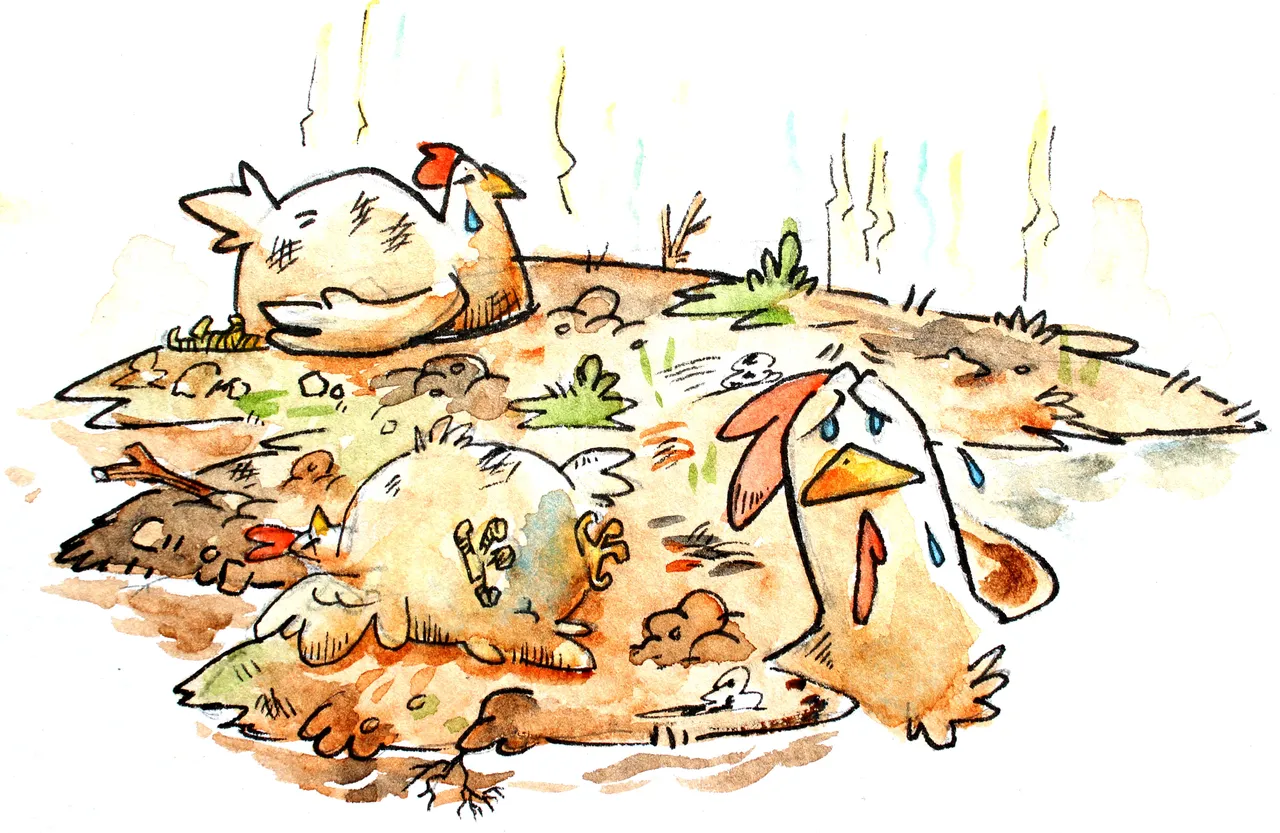This is part two of information about Principle #4.
In the garden and on the farm, we want to apply self-regulation to our systems so that they function smoothly. We set it up, define the parameters, and then wait to accept feedback. For more info, read Part 1 of this post here: https://steemit.com/homesteading/@squdsi1/permaculture-principle-4-apply-self-regulation-and-accept-feedback-part-2
I want to talk about chickens now.
Rotated Animal Yards
Let us look at the pattern of animals and their interaction with a piece of land. Imagine a chicken getting onto a free-range yard for the first time ever...

Its a beautiful thing. But for how long???
Lets think about it. What do the chickens do on their first day. To answer this, imagine telling a kid at a buffet table that he has free range. Where will he go first.
Yeah, thats right. Straight line to the chocolate cake.
So it is for the chickens. The chickens start by eating their favourite bugs and plants. They eat them and then they visit their second favourite bugs and plants. Then they go back to their house, fat and happy.
Then, after a few days, there is no more of their favourite foods, so they start to eat the less palatable stuff. Then, one morning, their favourite bug or plant sprouts again, and instantly the chickens eat it down.
You can probably guess where this is going. After about 1 month, the food that the chickens prefer no longer grows in the free range. The chickens have shifted the composition of plant species that grows on the land.
Lets say that again...
The chickens shift the composition of plant species that grows on their range.
They eat everything they like and within a month or two, only plants and bugs they dont like begin to proliferate. This makes the free range way less nourishing for the hens.
Furthermore, their scratching and manure burns organic matter in the soil and begins to create bald and bare patches of land. Eventually, unrested free range breaks down, gets gross, hard packed, muddy, and it doesnt even feed the chickens anything they like. Furthermore, the ground gets sick and over-fertilised, and the chickens get sick as well, largely due to constant access to their chicken hosts.

So what does this have to do with Principle #4? Well, by accepting the feedback the land is giving us, we learn that it is not good to keep the chickens on the same piece of land for too long. The feedback from the land is the bare spots, uncomposted manure, general bad smell, and hard-packed or muddy conditions. This is a sign that the chickens need to move.
We move them using rotated chicken yards, as movable houses are not practical where we live. So all our chicken houses have at least two doors, each leading into a separate space where the chickens can range, until the land sends feedback that its time to move them.
Over time, we learn the details of this sort of system. For example, this fenced off area usually gets disturbed in 2 months, whereas that piece over there usually only takes a month before the 30 hens need to be moved. Maybe it is due to the type of plants growing on each piece. Maybe you want to keep them longer and experiment with throwing in hay or wood shavings to see if that slows the disturbance. Always, make a change (apply self-regulation), and then observe to see what happens (Accept Feedback). Then repeat.
As a side note, we have loads of info on why un-rested free range is bad for the chickens and the land, and why you need to consider rotated yards or movable fences/housing when keeping animals. But we will share that stuff once we get through the principles. Thanks for reading!!!
And as always, this list of 12 Permaculture Principles was given to us by the great David Holmgren, co-founder of Permaculture. https://permacultureprinciples.com/
NOTE: This post is proudly filled, COMPLETELY, with original writing and photos. ENJOY!